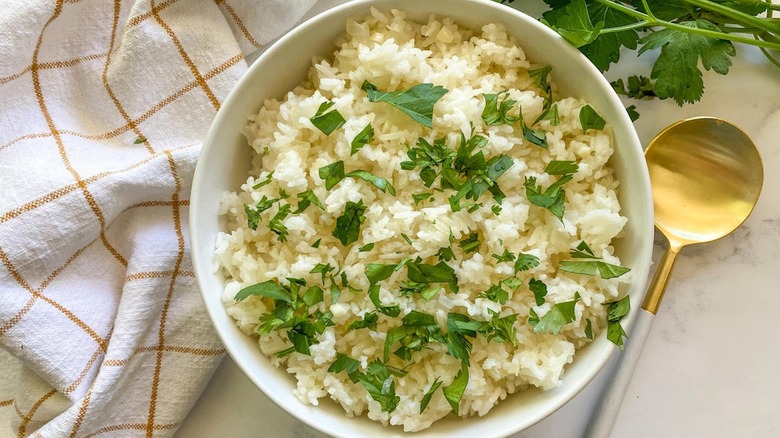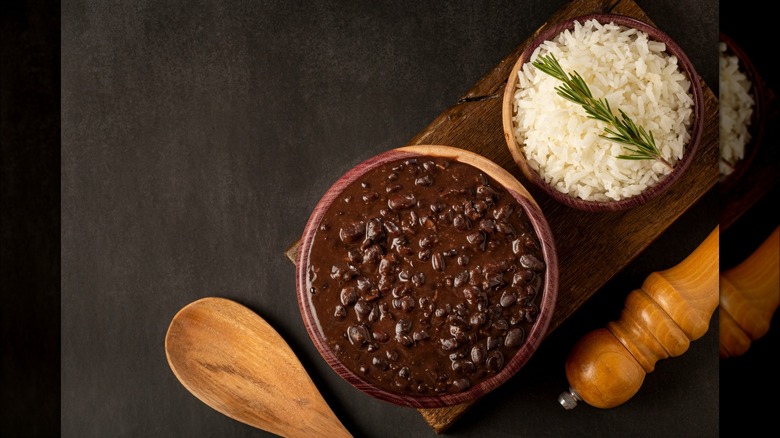The Key To Savoring Rice The Brazilian Way
Rice is the world's most consumed staple and as much of a constant in Brazil as it is in Asia, where it originated. Rice accompanies lunch and dinner in Brazilian restaurants and households, but they have made simple yet revolutionary modifications to both its cooking method and flavor.
Instead of simply boiling white rice in water, Brazilian rice is made pilaf-style by frying it in earthy olive oil with minced garlic and onions before simmering to fragrant and fluffy perfection. Onions and garlic go into a sizzling pot of oil to fry until caramelized and translucent, then rice, rinsed of excess starches, is stirred in to absorb all the rich aromatic flavors. Once the rice has fried for a minute or two, boiling water and salt are added. Adding already-boiled water to the rice kickstarts the cooking process, which reduces the overall cooking time for the rice.
Garlic and onions are well-known and widely used flavor agents for most savory recipes, from soups and stews to marinades and stir-fries. Many culinary traditions don't see the need to add anything more than a dash of salt to white rice as it usually accompanies a heavily seasoned main course. But Brazilians value richness and vibrance in every bite and embellish rice with the same robustness and flavor inherent in every aspect of their culture.
How to savor Brazilian rice
Long-grain, white rice is the standard Brazilian staple, but the method and ingredients also work with brown rice. Garlic and onions infuse the rice with caramelized savoriness while the olive oil provides earthiness. If you want to go the extra mile, you can use boiled broth instead of water. Top the rice with minced parsley (commonly called cheiro verde or "green smell" in Portuguese) and a squeeze of fresh lime juice for even more complexity.
Brazilians serve their aromatic and fluffy rice with many of their most famous meat, fish, and starch dishes. Rice and beans are the standard accompaniment to classic plate lunches in restaurants and households around Brazil. In Rio de Janeiro minced beef aka picadinho, rice, beans, french fries, and a salad is typical. In Sã o Paulo, Virado is a common lunch plate, consisting of rice topped with pork chops, fried sausage, plantains, and fried eggs. A common accompaniment to any dish in the country that includes rice is farofa, which is similar to breadcrumbs, but made from fine cassava flour. Farofa is seasoned and cooked, often with onions, minced carrots, or bacon, to fold into the meal's other components.
Rice is also a classic accompaniment to Brazil's national dish, feijoada, a bean, pork, and beef stew, and the bright red Bahian seafood stew, moqueca. Even if you aren't creating a Brazilian feast, this flavorful and delicious Brazilian rice will enhance anything you'd like to pair with it, whether it's a fried egg, sauteed vegetables, or simply grilled fish.

